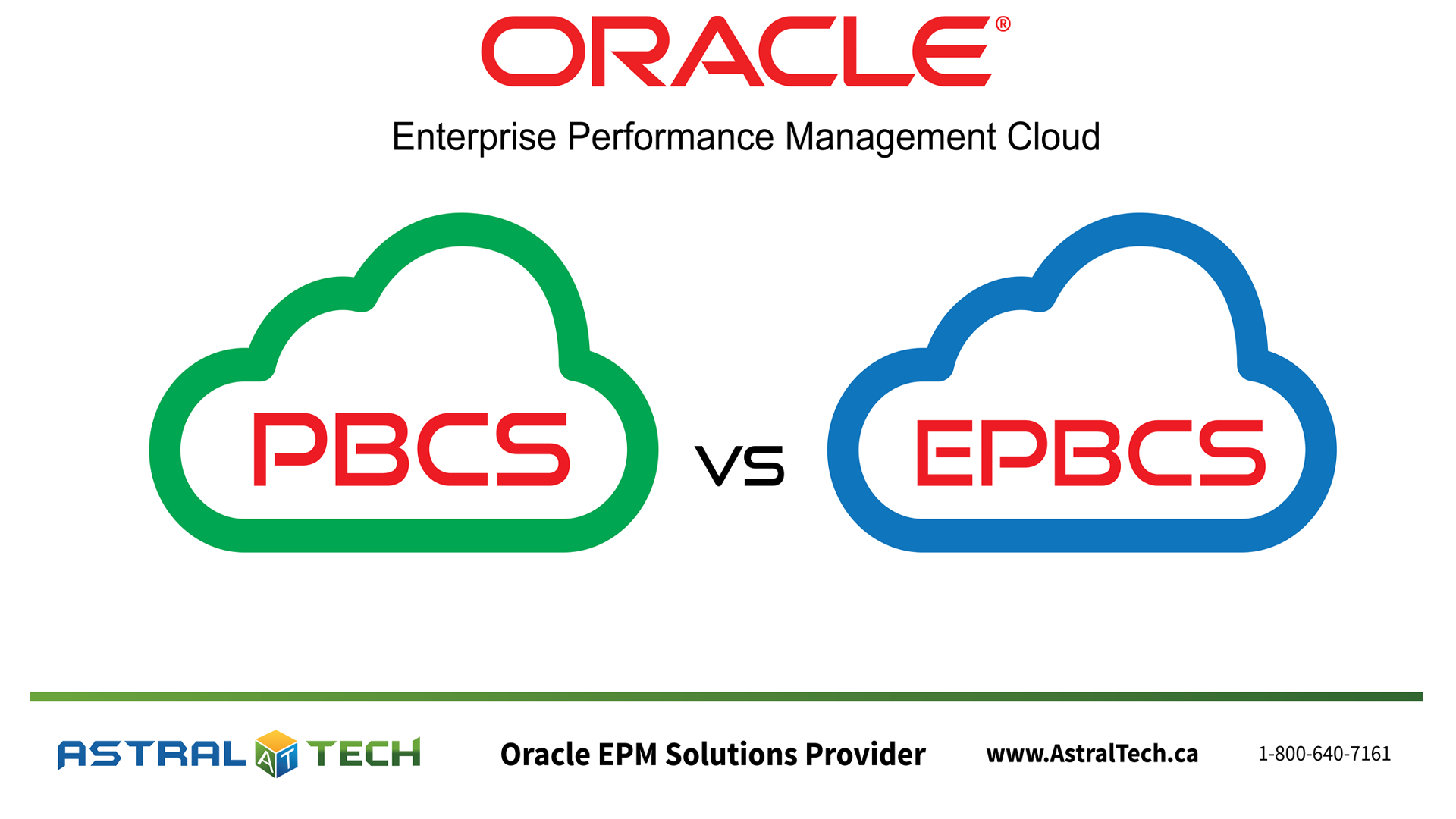
If you are considering an Oracle cloud-based planning solution, you have two choices:
- Planning and Budgeting Cloud Service (PBCS)
- Enterprise Planning and Budgeting Cloud Service (EPBCS)
“What is the difference between PBCS and EPBCS?”
We are asked this question frequently, so I would like to go over the features and functionality of both solutions.
How these Oracle Planning Solutions Are Alike
Both PBCS and EPBCS are built from on-premises Hyperion Planning, a mature and proven system. With the purchase of either of these subscriptions, you will get:
- Two environments, each containing:
- 3 BSO Plan Types
- 3 ASO Plan Types, and
- 1 consolidated ASO reporting cube
Each environment only contains a single planning application with multiple plan types. As with other Oracle Enterprise Performance Management (EPM) solutions, these also include Smart View, so that users can continue to work with their familiar Excel interface.
How they Differ
In PBCS, there is no pre-built content and a blank slate of plan types are available to build custom applications. Like the on-premises version of planning, PBCS allows flexibility to make changes to business rules and the templates behind the business rules. Clients can migrate an on-premises Hyperion Planning application into PBCS relatively easily.
With EPBCS, clients get pre-built business processes, logic and reports. In an on-premises world, we referred to these as modules, but in the move to the cloud, the nomenclature was revised to business processes. These business processes are much more than just a move of the on-premises module into the cloud. Several are net-new, and those that are not new have significant rewrites, improvements, and enhancement.
Diving into the business processes, you realize the following benefits:
- Financial: Integrated driver-based Planning for Income Statements, Balance Sheets and cash flow
- Workforce: Headcount and compensation planning to link financial plans with the workforce
- Capital: Planning for the long-term impact of capital assets on financial plans
- Projects: Bridging the gap between project-planning systems and the financial planning process
EPBCS is a start anywhere application. You don’t need to use all the business processes right away. You can begin with building your financials and then add the other business processes as your needs grow.
Making the Decision – PBCS or EPBCS?
When deciding whether to purchase a PBCS subscription or an EPBCS subscription, it comes down to the built-in business processes and content. If you don’t have a need for the business processes, or require the ability to customize applications, then PBCS will suffice. If you want rapid deployment of best practice business processes, then EPBCS is the solution for you.
EPBCS is a costlier option than PBCS. The PBCS subscription is USD $120 per user per month compared to EPBCS, which is USD $250 per user per month.
PBCS allows for customization around your specific organizational needs and although your monthly investment is cheaper, you will have to invest time and energy in customizing your environment.
Astral Tech’s experienced PBCS and EPBCS team can assess your needs and advise you on the right solution. Whether you are looking to migrate your current on-premises Hyperion Planning to the Cloud or you would like to implement Oracle Planning and Budgeting cloud solutions, we can help you decide.
Please feel free to reach out to Astral Solutions Group if you have any questions related to PBCS or EPBCS.




